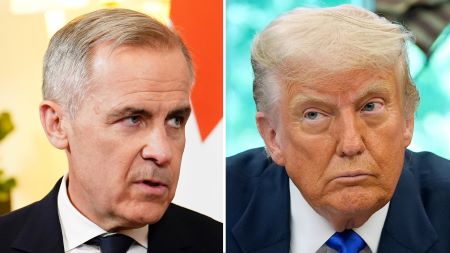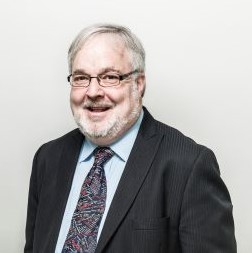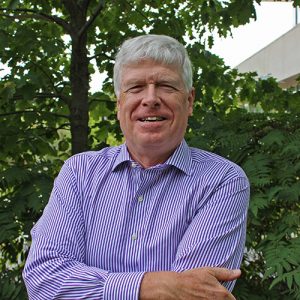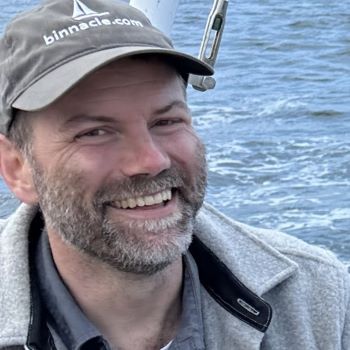Canada needs to put science, technology and innovation at the core of economic policy
Canada needs to put science, technology and innovation at the centre of its economic policy agenda or risk losing ground to other countries that are doing so, panellists said at Research Money’s 24th annual conference in Ottawa.
The country is at a critical moment in history and requires a bold vision for what it desires to be and wants to accomplish – a vision that all Canadians can support, they said during a session titled “The Role of Public Policy in Fostering Innovation: Immediate Priorities.”
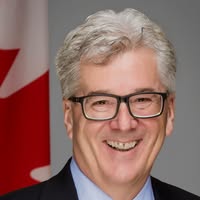 “We do have an enemy and I think it’s our status quo. The status quo is not delivering what we need it to deliver,” said panel moderator Senator Colin Deacon (photo at left), an independent senator representing Nova Scotia.
“We do have an enemy and I think it’s our status quo. The status quo is not delivering what we need it to deliver,” said panel moderator Senator Colin Deacon (photo at left), an independent senator representing Nova Scotia.
“Over the last decade, the willingness to really challenge the status quo has been beaten out of much of the public service,” he said.
“I want to start celebrating risk-taking – whether it’s successful or you have to fail forward – to celebrate risk-taking in the public service,” Deacon said.
 Canada’s science and technology policy framework feels disparate and random, with a panoply of different initiatives and programs layered on top of each other, said Sean Speer (photo at right), co-founder and editor-at-large at The Hub, who was a senior advisor to former prime minister Stephen Harper.
Canada’s science and technology policy framework feels disparate and random, with a panoply of different initiatives and programs layered on top of each other, said Sean Speer (photo at right), co-founder and editor-at-large at The Hub, who was a senior advisor to former prime minister Stephen Harper.
Federal programs and initiatives aren’t connected to “a theory of the case,” or a cohesive, overarching narrative about why science and technology policy matters to Canadians, he said.
“At a most fundamental level, we need the science and technology community – those around innovation and entrepreneurship – and then ultimately our bureaucratic and political classes, to see a science and technology framework not merely as a matter of stakeholder relations or something done off the side of our collective desks,” Speer said.
“We need to see it at the centre of a modern economic policy agenda. Because as everyone in the room knows, increasingly our global competitors are seeing it that way.”
Speer agreed that Canada is at a crucial moment, given what’s happening with the Trump administration’s steep funding cuts to government scientists, agencies and programs, and the shifting geopolitical environment.
“If we can’t find the collective wherewithal to double down on science and technology in this moment, it prompts the question: ‘Could we or would we ever?” Speer said.
 Nicole Janssen (photo at right) co-founder and co-CEO at Edmonton-based AltaML, said what’s missing in Canada is a “greater vision,” not just from the federal government but a vision that every Canadian can get behind.
Nicole Janssen (photo at right) co-founder and co-CEO at Edmonton-based AltaML, said what’s missing in Canada is a “greater vision,” not just from the federal government but a vision that every Canadian can get behind.
“What do we want to be as a country? What do we want to win at?” she asked.
Canada needs to focus its science, technology and innovation (STI) programs on specific areas of inherent strengths where the country can lead and be globally competitive, Janssen said. “We can’t just sprinkle [funding] a little bit all around to make everybody happy, because that actually impacts no one.”
Canada also needs to change the metrics for measuring the success of its STI programs, she said.
“We cannot keep saying that the primary focus is creating jobs,” because the country’s working population is shrinking and “we’re not going to have people to fill those jobs,” she said.
Instead, Canada needs to focus on and measure productivity, Janssen said. That includes a requirement that every federal department and agency continuously improve its productivity.
“I think we need to cut a lot of our [STI] programs,” she said. “A lot of our programs aren’t effective. We have the data that tells us that. Why do we keep running them?”
Time to be “non-Canadian” and not be so nice
 “We are in a special moment and we should not miss the opportunity,” said Rémi Quirion (photo at right), inaugural chief scientist of Quebec for the last 14 years and professor in psychiatry at McGill University.
“We are in a special moment and we should not miss the opportunity,” said Rémi Quirion (photo at right), inaugural chief scientist of Quebec for the last 14 years and professor in psychiatry at McGill University.
“We have to be ambitious and focused,” he said. “We almost need to be ‘non-Canadian’ – not that nice anymore,” which is typically how Canadians are viewed internationally.
Quirion said a lot of people working in government are afraid to take the risk to be bold and innovative, because if doing so goes wrong they worry they’ll be punished.
But government needs to recognize and reward audacious STI proposals and programs in the public service, he said. “If we are in the business of R&D, we want to be among the best.”
“I want to be able to compete with South Korea, with Scandinavian countries, with Switzerland.
It should be our objective – not to be in the middle of the pack.”
The Quebec government works by five-year strategies on research and innovation, Quirion noted. One of the key components of the current $7-billion strategy was the creation of innovation districts, centred on cities and regions that have existing supportive infrastructure such as universities, anchor industrial sectors, housing and other social amenities.
Sherbrooke is an innovation district in quantum computing, Trois Rivières in green energy, and Bromont in microprocessors. The Quebec government just created an innovation district in Montreal for aerospace.
“The key to these innovation districts is partnership between the public and the private sectors,” Quirion said.
“Universities and [government] ministries are involved, but the private sector is very, very present. The training includes moving back and forth from industry to the universities.”
Quirion said the Quebec government also has an innovation week that involves every department in talking about their process and progress on innovation, “so innovation is not just in the ministry where innovation is involved.”
A key to making research and innovation programs effective is to get the public’s support by bringing the public onboard in proposing and helping to co-create the programs, he said.
The Quebec government has launched two program initiatives that engage the public to submit proposals in environment, health and other areas. The public’s proposals are then linked to experts in universities who in turn are connected to companies in the city or region.
Janssen said AltaML, through its GovLab.ai program, has built a similar interconnected and collaborative relationship with the Alberta government and provincial departments that want to adopt AI in their operations.
AltaML works with the provincial departments – the end users of the AI – to identify use cases for AI that are going to return actual value. Then these departments compete to get time from AltaML’s team in developing their use cases.
The use cases are then further evaluated and only the best get to move forward, “allowing us to prioritize those dollars on projects that are going to bring value,” Janssen said.
A key to the program’s success is engaging the end users of the AI systems right at the beginning in co-designing the systems because the end users are the ones who are able to understand and measure the impacts on their workflow and productivity, she said.
AltaML also brings 20 students from across the country each quarter into the program, who work on projects alongside the project team. These students provide the talent pipeline for the provincial government and also for Alberta companies.
Another feature of the program is that the Alberta government owns the intellectual property generated by the projects, but AltaML has the ability to commercialize it – thereby returning revenue back to the government.
The Alberta government is willing to share that IP with other jurisdictions, as long as they also agree to share the IP they build, Janssen said.
The cities of Edmonton and Calgary have both joined the program and Nova Scotia is looking to participate, she said. “So we can all benefit. Taxpayers are only paying once” to build the AI systems needed by governments.
Canada’s struggle with science and technology is a “small ‘p’” political problem
Speer said he sees the issues with Canada’s science and technology framework as less having to do with bureaucracy and institutions and more of a “small ‘p’” political problem.
“It is to say that our political class across the political spectrum does not see science and technology as central or fundamental to macroeconomic policy,” he said.
“It sees [science and technology] principally as tangential to core economic questions like tax competitiveness or the regulatory policy framework or Canada’s network of trading arrangements around the world.”
Speer said he worries that the current federal government – unlike the previous Liberal government under Justin Trudeau – doesn’t have an innovation minister per se whose portfolio encompasses and crosses into other high-priority areas such as the economy and industry. Instead of a minister of innovation, science and industry, the Mark Carney government has a minister of AI and digital innovation.
“In addition to trying to cultivate that culture and mindset that sees science and technology inherent in every department and agency, I am still a believer that we need as a matter of architecture some type of institutional or political capacity to bring coherence to the science and technology framework,” Speer said.
Speer said there is value in having a minister or some sort of other person in charge of science, technology and innovation and “having the buck stop with someone [or some agency] with the capacity to reach across different institutions and different programs and try to bring a degree of coherence.”
That was at the heart of the recommendation, by the Advisory Panel on the Federal Research System in its report (the “Bouchard report”), to create a Knowledge and Scientific Foundation (CKSF), Speer noted.
As envisioned by the Bouchard expert panel, the CKSF would coordinate interdisciplinary, mission-driven research, inter-sectoral research initiatives and international collaborations.
The CKSF's mandate would support coordination and planning across the research support system by providing a mechanism for the three research granting councils, Mitacs, Genome Canada, and other key funding partners to streamline, harmonize, integrate and coordinate programs, processes and policies.
A key function of the CKSF would be developing an integrated strategic research plan for the research support system, informing individual strategic plans of the council agencies and other research funding partners.
Speer said if he were advising the prime minister of the day, he would recommend earmarking hundreds of millions of dollars and identifying three or four prize competitions – similar to the XPrize model – to be run over the next four years.
The competitions would reflect Canada’s core competencies and comparative advantages, and focus on fundamental questions facing the country, such as the energy transition, major health care reform and other key areas.
“I think that’s a way to do science policy that builds some charisma,” he said. “We need to build public support for major investments [in science and technology] in a world of fiscal scarcity.”
“I think that involves telling a charismatic story about science and technology, not merely an instrumental or utilitarian one,” he added.
One of the biggest impediments to making progress on Canada’s science and technology framework is the lack of political salience, or importance and prominence, Speer said.
“Part of that stems from the fact that the entire policy framework is very insular, very disconnected and in a lot of ways subject to real political limits when it comes to choosing an incremental dollar for science and technology versus the various other issues that motivate Canadians,” he said.
“Using prizes as a methodology may be able to square that circle,” Speer said.
STI policies need to be “citizen-centric” and co-designed with industry
Deacon pointed to several examples of what he views as failed federal science, technology and innovation policy.
The $4-billion digital adoption program to encourage businesses to become more digital was designed and deployed in a way that gave consultants revenue to build plans for small businesses, he said.
“It did not achieve any goal. It was designed by policy people, not those who are receiving the program and not those who had the best experience in government in working with those businesses,” he said. “That won’t work in the future.”
Another example is the $2-billion AI compute access fund that aims to provide more computing power to small and medium-sized businesses when, he argued, they already had sufficient compute and were really looking for more government support to scale up.
“So the government is delivering what the government wants to deliver, but not what those who are the intended audience are looking for,” Deacon said.
There’s also the five federally supported global innovation clusters, which at many points had as many people managing cluster programs as actually delivering the programs in each of the country’s regions, he said.
“We have got to find a new way. The way we’ve been doing it doesn’t work,” Deacon said. “There’s a profound risk of inaction. We need a culture change.”
Deacon said he’d like to see Prime Minister Mark Carney announce that in four months he’s going to fire one minister and one deputy minister who hasn’t been courageous enough to bring forward proposals to cabinet to get Canada out of its rut.
“We’ve got to get citizen-centric. We’ve got to stop designing [programs] in Ottawa and delivering one-size-fits-all across the country.”
During a Q&A with the panel, Lawrence Zhang, head of policy at the Ottawa-based Centre for Canadian Innovation and Competitiveness, pointed out that the federal government has no indication that the public cares about innovation, which isn’t ranked among Ottawa’s top priorities.
Also, the government doesn’t see itself as being rewarded by the public whenever it invests in innovation, he said. “It’s a chicken-and-egg [situation].”
Speer said Canadians need to recognize that science and technology policymaking is a competency that should be cultivated.
However, he thinks that federal public servants working in science and technology policy roles often aren’t valued for that deep policy making expertise.
Speer pointed out that the Canada School of Public Service runs a small exchange program where public servants leave the government temporarily to work in the private sector to gain industry perspective and experience.
But the program should be scaled up and flipped on its head so that it’s really about “bringing those ideas and experience outside of government into the government itself,” he said.
Canadians probably do succumb to the “niceness” stereotype when, rather than being iterative and experimental and recycling scarce resources into newer and different ideas, “we just end up layering institutions [and programs] on top of one another, such that we’re not optimizing our outcomes,” Speer said.
“If we were prepared to be ruthless about that, I think the case you could make to the minister of finance or the prime minister is that these are the investments that ought to be made in a world of scarcity,” he said.
He also noted that the elephant in the room is that the Ontario government essentially has no policy with respect to the province’s universities, “and we’re walking backwards into a financial crisis that will involve consolidation and possibly bankruptcies [of some universities].”
“It’s a huge instance of failure of political leadership,” Speer said.
The situation reinforces the notion that not only do Canadians need to build political support for a science and technology framework at the national level, but the provinces need to define the future of universities, “rather than just let them flounder and possibly fail,” he said.
Janssen noted that there’s a lot of unity sentiment in Canada right now, saying: “It is an opportunity we need to grab a hold of and decide who we want to be as a country.”
“I think we can be an exceptional leader in several things – not everything. Let’s decide what that’s going to be.”
“We are in a different world,” Quirion said. “We have to change the way we do things. We have to be bold and we have to be very, very ambitious.”
Deacon agreed, saying: “We cannot afford to be here [with these same science, technology and innovation problems] in three to five years. We have to have moved out of this rut.”
R$
| Organizations: | |
| People: | |
| Topics: |
Events For Leaders in
Science, Tech, Innovation, and Policy
Discuss and learn from those in the know at our virtual and in-person events.
See Upcoming Events
You have 0 free articles remaining.
Don't miss out - start your free trial today.
Start your FREE trial Already a member? Log in
By using this website, you agree to our use of cookies. We use cookies to provide you with a great experience and to help our website run effectively in accordance with our Privacy Policy and Terms of Service.


